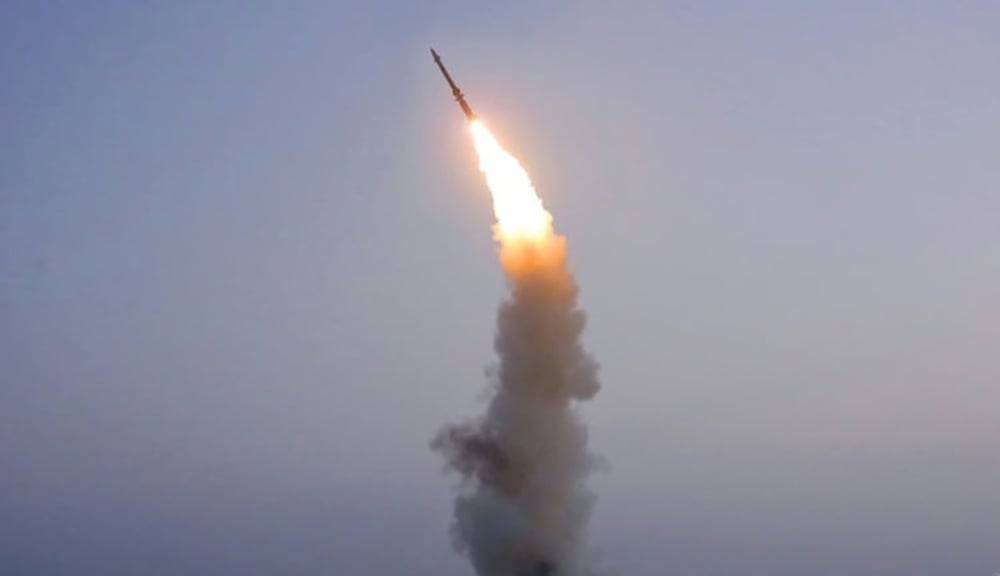South Korea Responds As North Korea Fires Most Missiles In A Day
South Korea responds as North Korea fires most missiles in a day. Several missiles were fired into the water near each other's coasts, which was a clear sign that things are getting worse. The North fired at least 23 missiles in one day, including one that landed less than 60 km (37 miles) from the city of Sokcho in the South.
Author:Hajra ShannonReviewer:Paula M. GrahamNov 02, 2022287 Shares23.9K Views

South Korea responds as North Korea fires most missiles in a day. Several missiles were fired into the water near each other's coasts which was a clear sign that things are getting worse.
The North fired at least 23 missiles in one day, including one that landed less than 60 km (37 miles) from the city of Sokcho in the South.
Three air-to-ground missiles were fired from Seoul's warplanes over the disputed maritime demarcation line.
After that, Pyongyang fired six more missiles and 100 artillery shells in a barrage.
The North says the launches are in response to "aggressive and provocative" large-scale military drills that South Korea and the United States are currently doing.
On Tuesday, Pyongyang said that if they kept doing their joint military drills, they would have to pay "the most horrible price in history." This was seen as a threat to use nuclear weapons. As tensions have risen, the North has tested a record number of missiles this year.
Pyongyang has done six nuclear tests between 2006 and 2017, despite crippling sanctions, and there are rumors that it is planning a seventh. It has kept improving its military, even though it is against UN Security Council resolutions, in order to threaten its neighbors and maybe even be able to attack the US mainland.
Pyongyang fired missiles into waters close to South Korea on Wednesday, setting off air raid sirens on Ulleung, an island controlled by Seoul. People who lived there were told to leave and go to shelters underground.
One ballistic missile went over the Northern Limit Line (NLL), which is a disputed sea border between North and South Korea.
It didn't land in South Korean waters, but it was the closest a North Korean missile has ever gotten.
Seoul said it was an "unacceptable" invasion of its land.
Officials from the South said that their military's air-to-ground missiles landed about the same distance past the NLL off the coast of the North.
After more than 150 people died in a crowd crush in Seoul over the weekend, South Korea is in a period of national mourning. This is why the tit-for-tat launches are getting a lot of attention.
At first, South Korean military officials said that the North had fired at least 10 missiles in both east and west directions on Wednesday morning, including the one that hit the NLL.
Later, they said that the North had launched 23 missiles that day, including seven short-range ballistic missiles and 16 other missiles, six of which were surface-to-air.
The missile that came closest to South Korea was fired before 9 a.m. (0 a.m. GMT), and it landed about 26 km south of the de facto border, 57 km east of the coastal town of Sokcho, and 167 km north-west of Ulleung island.
South Korean and Japanese officials heard about the launch right away and quickly spoke out against Pyongyang's escalation.
South Korea's military said it was the first time a ballistic missile had "landed south of the NLL near our territorial sea" since the Korean Peninsula was split up after the 1950-1953 Korean War.
President Yoon Suk-yeol, whose policy is to be tough on North Korea, called it a "effective territorial invasion," even though the missile didn't land in South Korean territory. He promised a "quick and firm response."
International law says that a country can only claim territory in the sea up to 12 nautical miles from its coast.
This year, tensions have been rising, and North Korea has already fired more than 50 missiles from the peninsula, including one that flew over Japan.
Conclusion
On Monday, a US submarine powered by nuclear energy arrived off the coast of South Korea to take part in the latest of a series of joint drills between the US and South Korea that started in August.
They are called "Vigilant Storm," and they are the biggest military drills that Seoul and Washington have ever done together. Hundreds of military planes from both countries take part.
Jump to

Hajra Shannon
Author

Paula M. Graham
Reviewer
Latest Articles
Popular Articles
